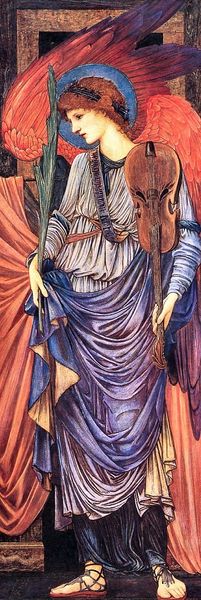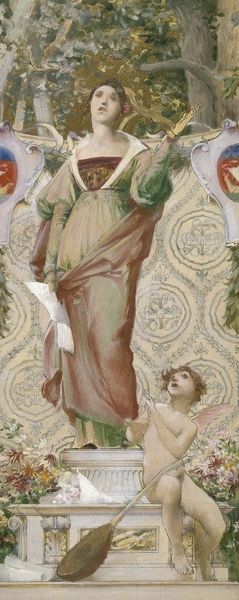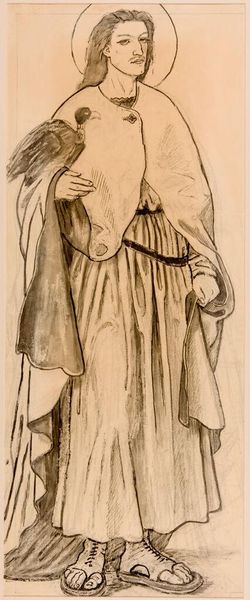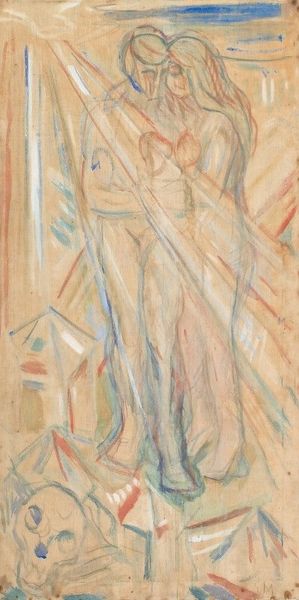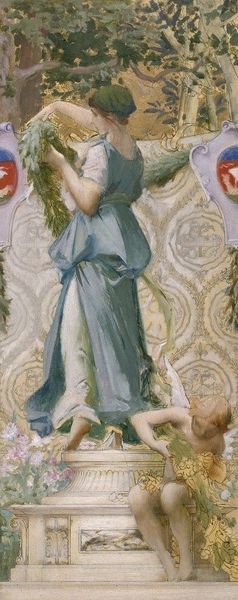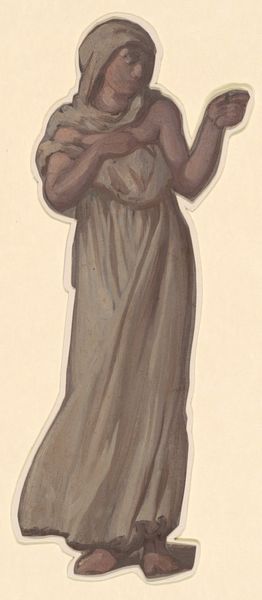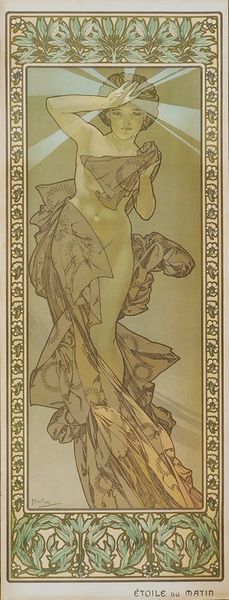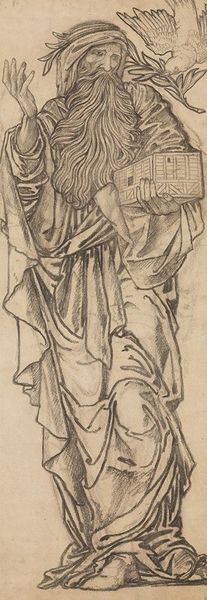
drawing, paper, watercolor
#
portrait
#
drawing
#
charcoal drawing
#
figuration
#
paper
#
watercolor
#
line
#
symbolism
#
watercolour illustration
#
history-painting
#
academic-art
#
miniature
#
watercolor
Copyright: Public Domain: Artvee
Editor: This is "St Ursula," a drawing in watercolor and charcoal on paper, created in 1868 by Edward Burne-Jones. I'm struck by its delicate lines and how the figure seems both ethereal and powerful. What stands out to you about this piece? Curator: For me, this work resonates deeply within the socio-political context of Victorian England. Burne-Jones was deeply involved in the Arts and Crafts movement, a reaction against industrialization's dehumanizing effects. Look at the figure of St. Ursula; does she embody a pre-Raphaelite rejection of the cold, impersonal machine age through her almost dreamlike rendering and her associations to a more hand-made world, steeped in the traditions of Medieval guilds and craftsmanship? Editor: I can definitely see that in the details of the drapery and her serene expression. It feels like a conscious effort to evoke a different era. Curator: Precisely! And think about the role of women within the Pre-Raphaelite Brotherhood. These artists often placed them in mythological or historical settings, investing them with allegorical power. St. Ursula, a virgin martyr, presents us with complex ideas around faith, sacrifice, and the perceived strength and vulnerability of women. How does Burne-Jones subvert or reinforce these themes with his choices in portraying St. Ursula? Editor: I suppose it’s complex… She is holding what looks like a spear, which I find quite unusual. So maybe Burne-Jones aims to make a statement here by giving a weapon to a female character. Curator: Exactly, but look more closely and consider this: Does it look threatening, or does she hold it more passively, like a symbol? How might our contemporary feminist perspectives engage with Burne-Jones's construction of female agency here? Editor: I hadn’t thought of it that way before. Now, considering both the historical context and contemporary views, it’s as if St. Ursula invites us to question not only our ideas of female strength and vulnerability but also the power of art to be an active part of socio-political conversations. Curator: That's wonderfully insightful. It demonstrates how artworks act as a nexus between historical contexts and the continuing dialogues within our society.
Comments
No comments
Be the first to comment and join the conversation on the ultimate creative platform.


